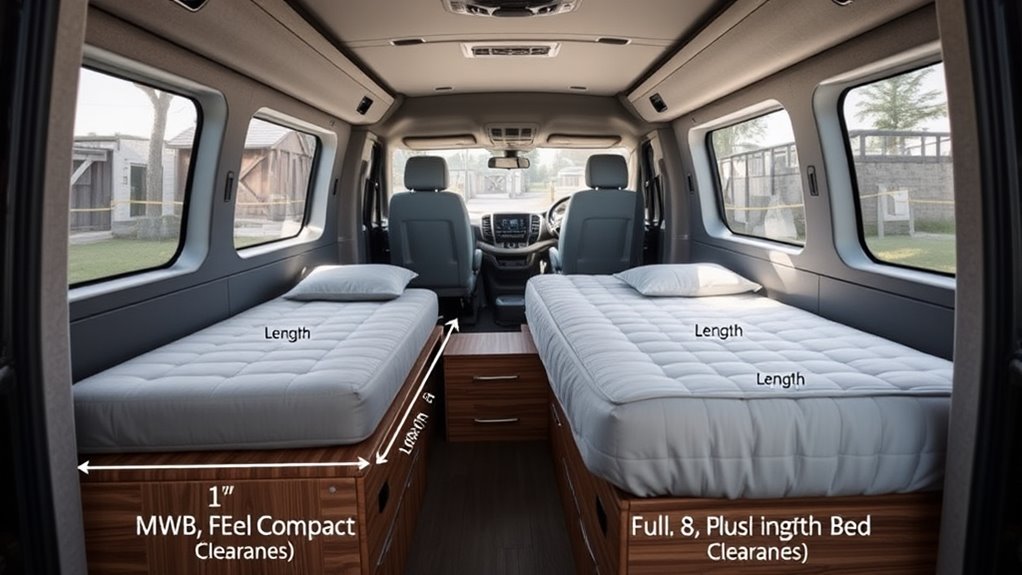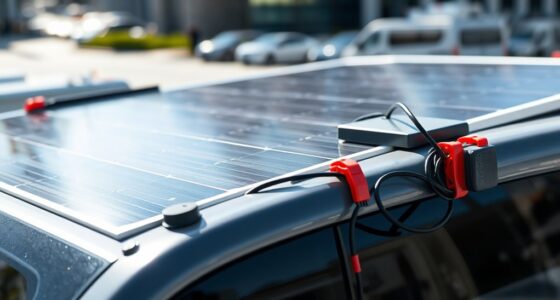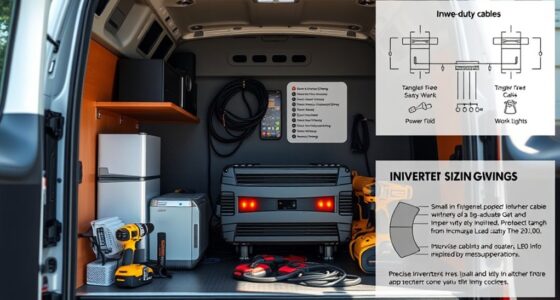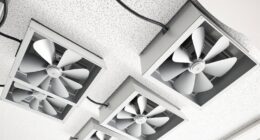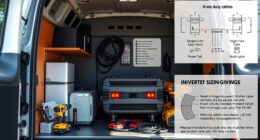When planning bed layouts for MWB and LWB vans, aim for a bed length of about 8-10 feet in MWBs and 11-12 feet in LWB models, ensuring enough space without crowding interior features. Maintain at least 2 feet of clearance at the foot of the bed and 4-5 feet in width for comfort. Proper positioning of windows and doors also matters for ventilation and access. Keep these tips in mind to create a cozy, functional space as you explore more options.
Key Takeaways
- Measure interior length accurately to determine maximum bed length for MWB (8-10 ft) and LWB (11-12 ft) vans.
- Leave at least 2 feet of clearance at the foot of the bed for comfortable movement.
- Opt for fold-away, Murphy, or pull-out beds to maximize space and versatility.
- Ensure bed width is 4-5 feet to maintain interior width and comfort.
- Position beds to avoid blocking doors, windows, and ventilation points for easy access and airflow.
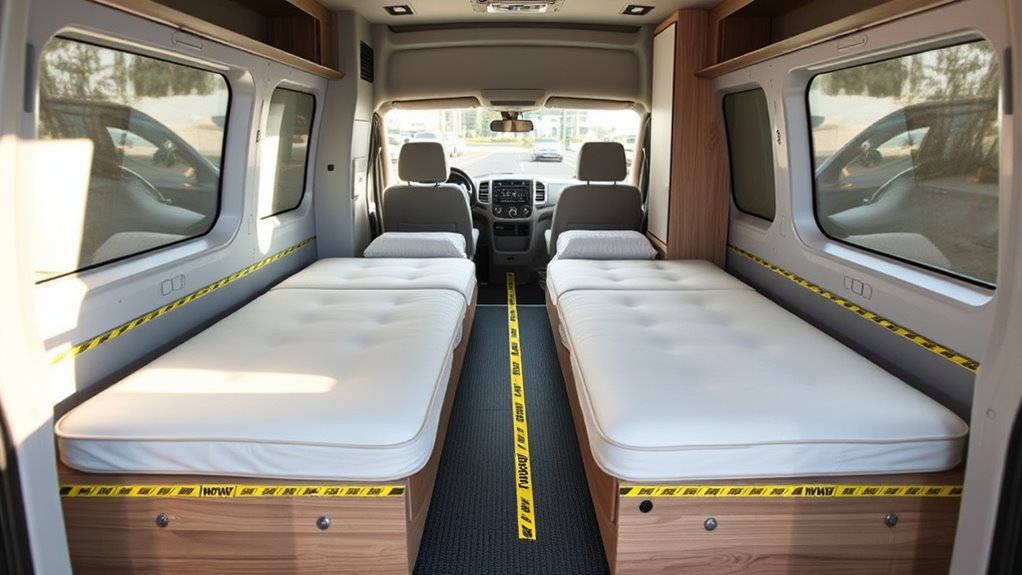
When planning your bed layout for a Medium Wheelbase (MWB) or Long Wheelbase (LWB) van, understanding the available space and configuration options is essential. Your first step is to measure the interior length carefully. MWB vans typically offer interior lengths ranging from around 8 to 10 feet, while LWB models can extend to 11 or 12 feet. Knowing these dimensions helps you determine the maximum bed length you can comfortably fit without sacrificing other critical interior features.
Remember, the length of your bed directly influences your comfort, so aim for a size that balances sleeping space with room for storage or seating.
Once you know your available length, consider the type of bed layout that best suits your needs. Fixed beds are popular for their simplicity and comfort but take up a significant amount of space. Fold-away or convertible beds offer versatility, allowing you to transform your sleeping area into seating or storage during the day. For example, a Murphy bed can fold into the wall, freeing up floor space when not in use. Sliding or pull-out beds are also effective, especially in MWB vans where space is tight, as they can be tucked away or extended as needed.
Think about how often you’ll use the bed and what other functions your van needs to serve.
Clearance is just as important as length. You need enough room to comfortably sit up in bed and move around without feeling cramped. When planning your layout, leave at least 2 feet of clearance at the foot of the bed for easy access and movement. If your van’s interior width is around 5 to 6 feet, ensure your bed width doesn’t reduce this space too much; typically, a bed width of 4 to 5 feet works well for most MWB and LWB vans. This way, you maintain enough room for other essentials like cabinets, seating, or a small kitchenette.
Also, consider headroom—your roof height determines how easily you can sit up in bed, particularly if you plan to add a mattress or bedding that slightly elevates your sleeping surface.
Finally, think about the access points and door placements. If your van has a sliding side door, ensure your bed layout doesn’t block it or hinder opening and closing. Likewise, if you plan to install windows or skylights, position your bed to maximize natural light and ventilation.
Balancing length, clearance, access, and comfort will help you design a bed setup that feels spacious, functional, and tailored to your travel lifestyle. By carefully measuring and planning, you’ll create a cozy sleeping area that makes the most of your MWB or LWB van’s interior space. Additionally, considering ventilation options can improve comfort and air quality inside your van.
Frequently Asked Questions
What Are the Best Bed Options for Maximizing Space in Mwb/Lwb Vans?
You should opt for a foldable or pull-out bed to maximize space in your MWB/LWB van. These designs fold away when not in use, freeing up room for other activities.
A fixed platform bed with built-in storage also works well, as it combines sleeping space with extra storage.
Consider custom-sized mattresses that fit snugly, ensuring you make the most of limited space while maintaining comfort.
How Do Weight Limits Affect Bed Installation in Mwb/Lwb Vehicles?
Weight limits directly impact your bed installation in MWB and LWB vehicles by dictating what materials and frame types you can use. You need to stay within the vehicle’s maximum payload capacity to avoid safety issues or damage.
Choose lightweight yet sturdy materials for your bed frame and mattress, and consider weight distribution carefully.
Always verify your vehicle’s weight limits before installing to ensure a safe and comfortable setup.
Can I Customize Bed Layouts for Different Mwb/Lwb Van Models?
Yes, you can customize bed layouts for different MWB and LWB van models. You’ll need to measure your van’s interior dimensions carefully and consider the specific model’s ceiling and side clearance.
Custom designs allow you to optimize space and comfort, but make sure to take into account structural elements like wheel arches and doorways. Working with a professional or using modular components can ensure your layout fits perfectly and remains functional.
What Safety Considerations Are Important for Installed Beds in Mwb/Lwb Vans?
Installing a bed in your van is like building a sturdy bridge; safety is paramount. You should secure all components firmly, ensuring weight is evenly distributed to prevent shifting.
Check that the bed doesn’t block emergency exits or ventilation, and use high-quality fasteners. Regularly inspect for wear and tear.
Are Foldable or Convertible Beds Suitable for Mwb/Lwb Van Conversions?
Yes, foldable or convertible beds suit MWB/LWB van conversions perfectly because they save space and offer flexibility. You can easily fold or convert the bed to create more room during the day, making your van more functional.
Just make certain the mechanism is sturdy and secure for safety, and check that the bed’s size fits your van’s dimensions. Proper installation guarantees comfort and safety for all your travels.
Conclusion
Think of your van as a ship, and the bed layout as its deck. Choosing the right length and clearance guarantees smooth sailing on every journey, providing comfort like a cozy cabin amid open waters. When you prioritize space and accessibility, you’re charting a course toward a more enjoyable voyage. Remember, the right setup isn’t just about dimensions—it’s about creating a sanctuary where every adventure begins with confidence. Happy travels!
